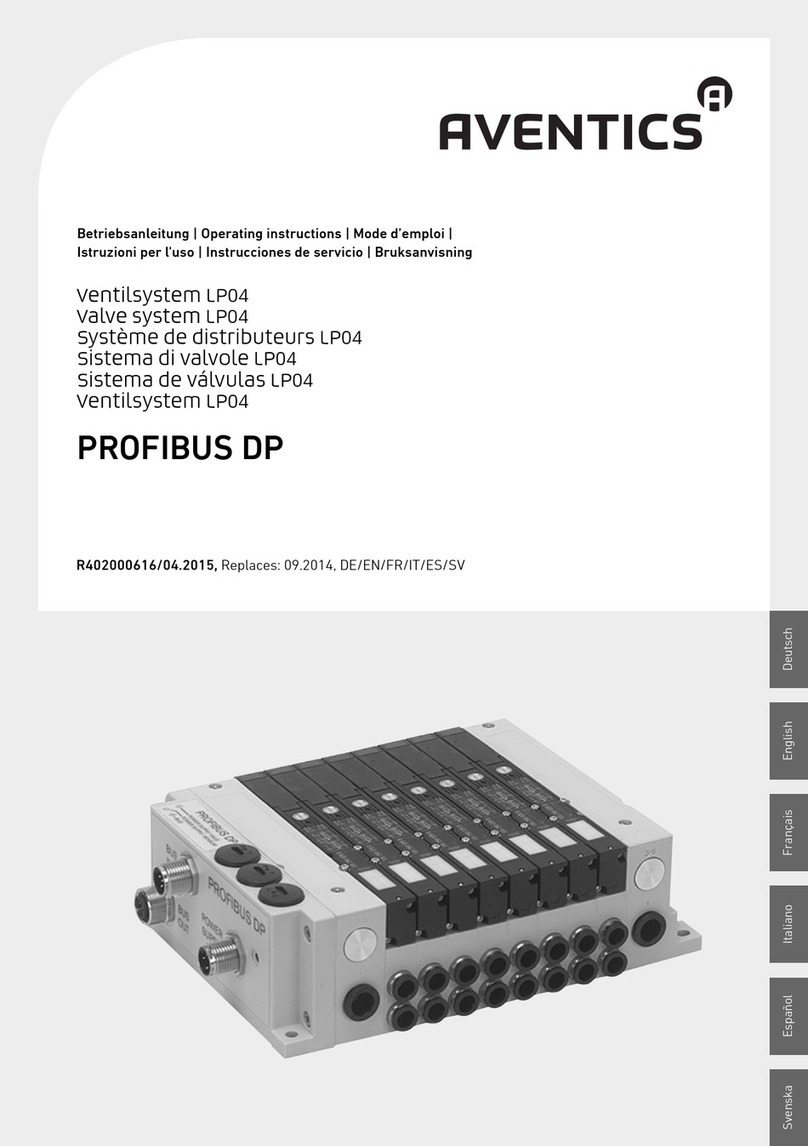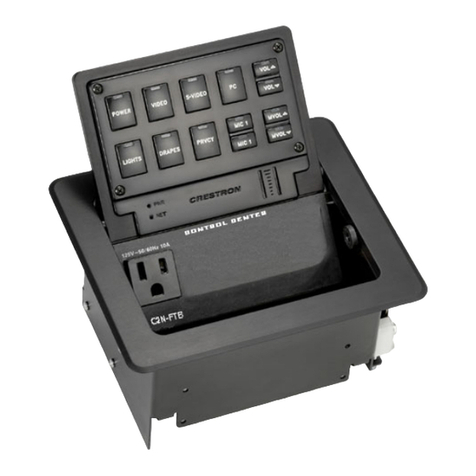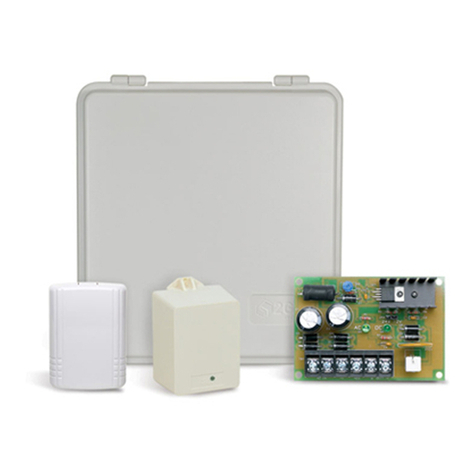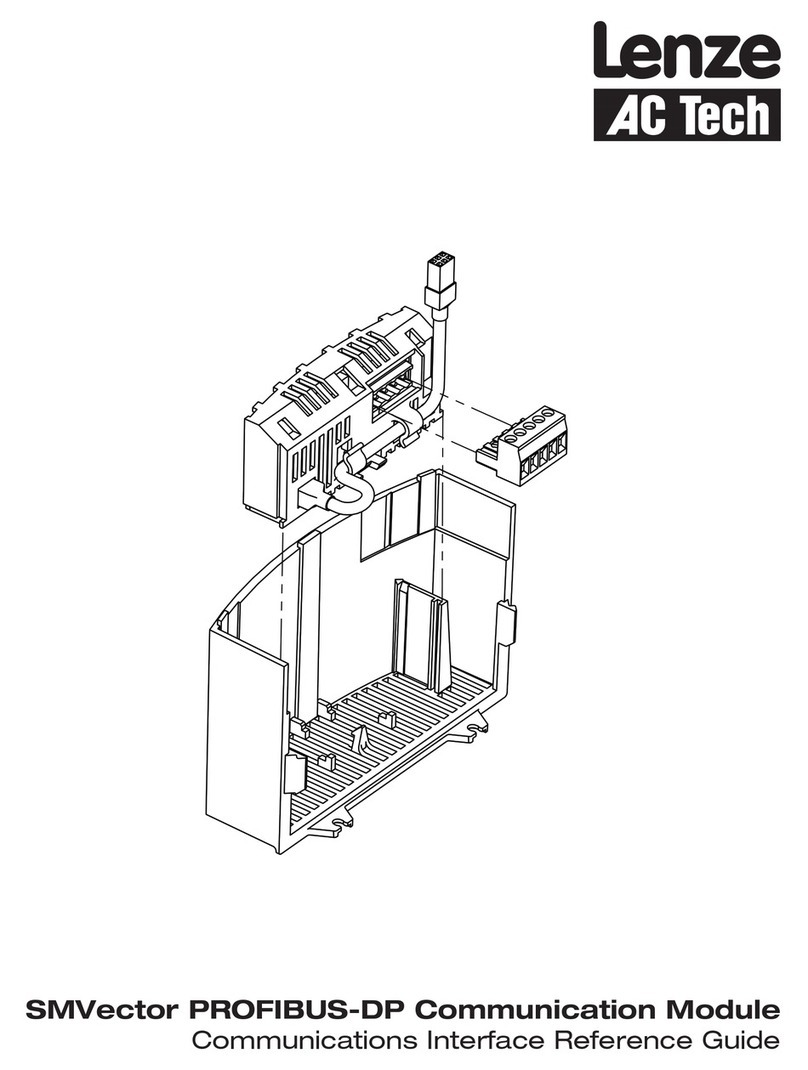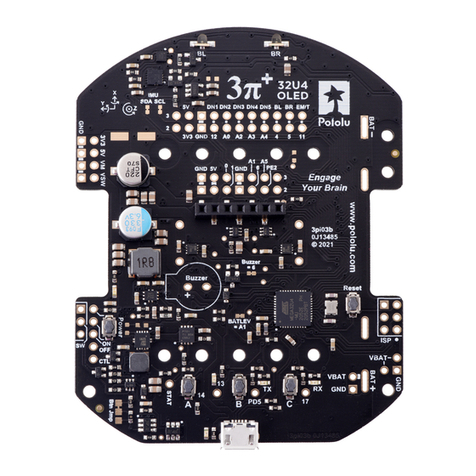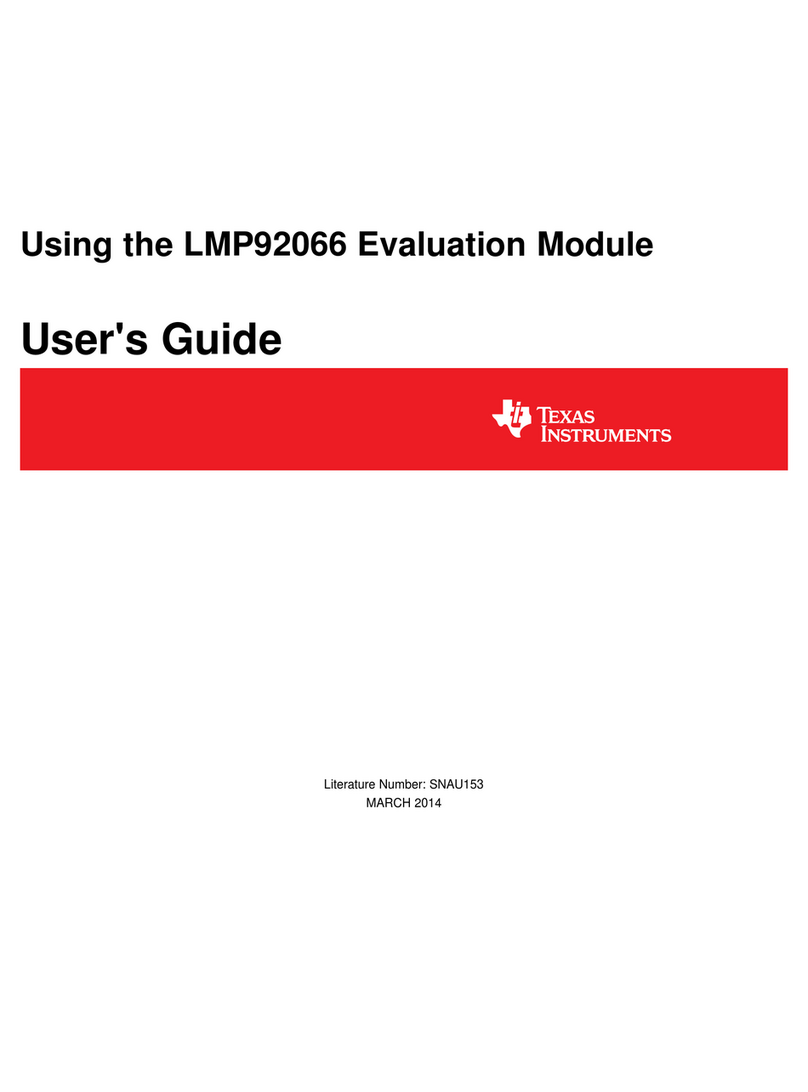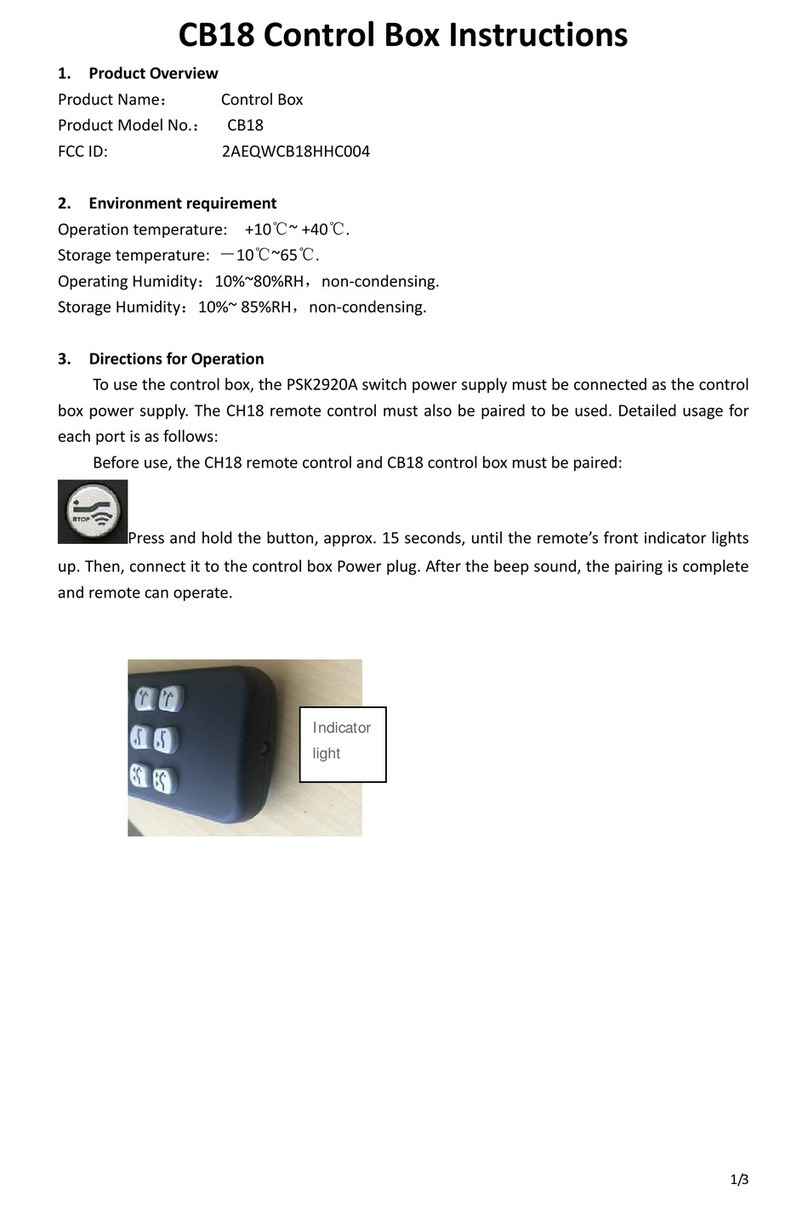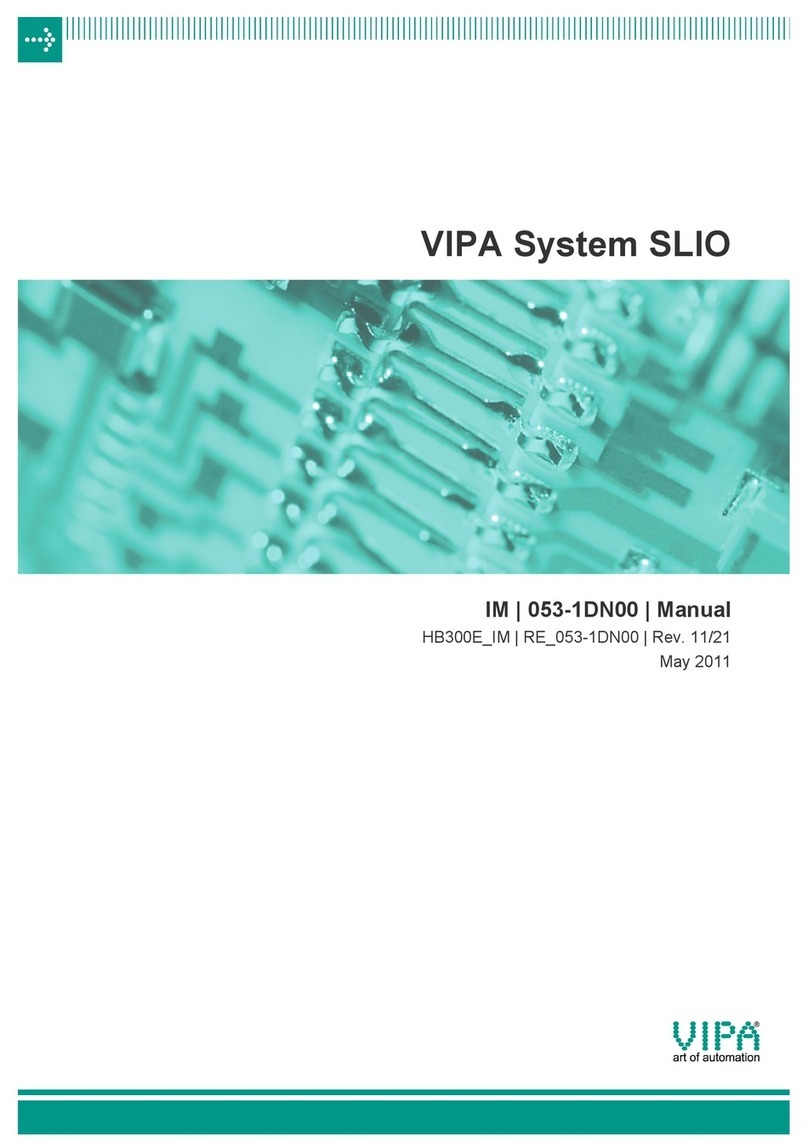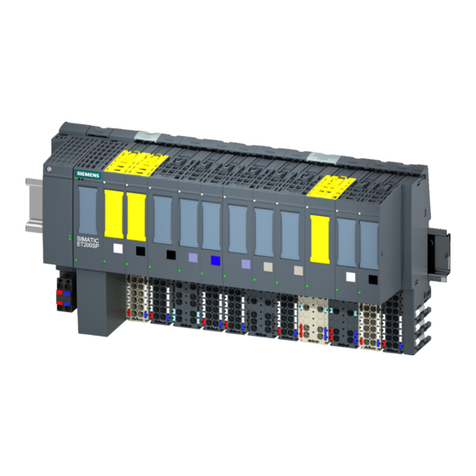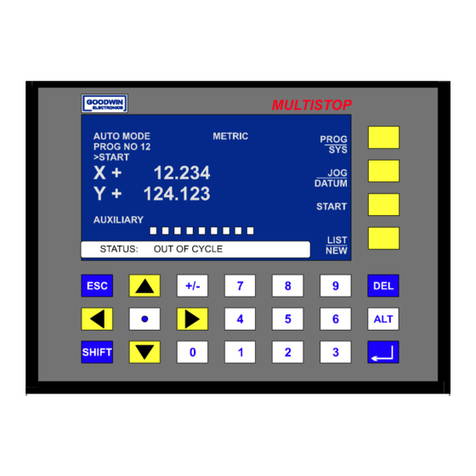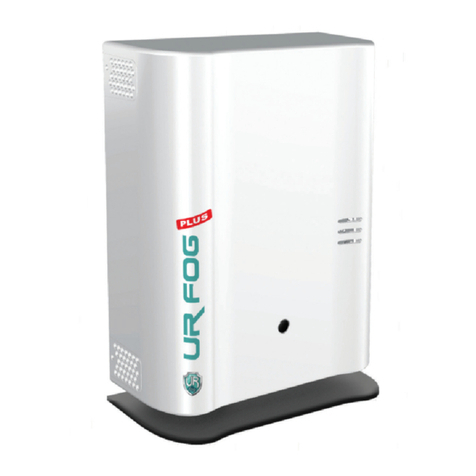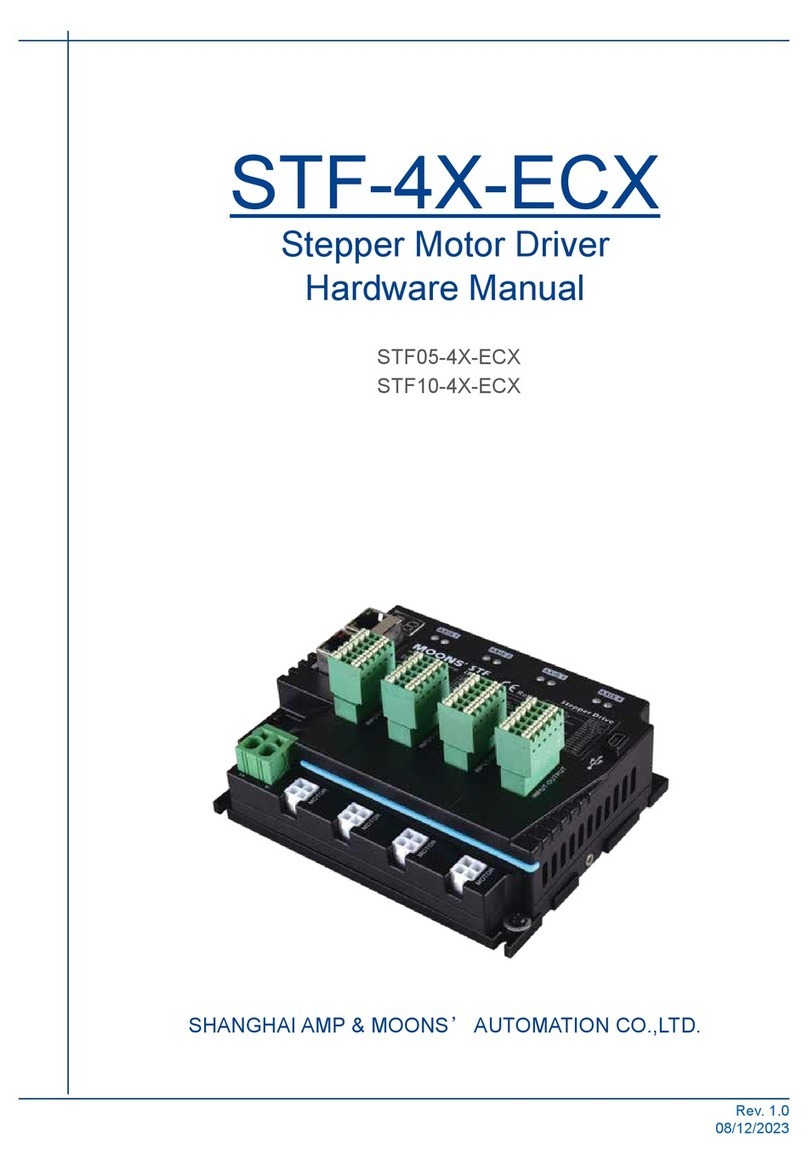ELEXOL Ether I/O 24 User manual

Ether I/O 24 Users Manual V1.3
Elexol Pty Ltd Version 1.3 Page 1 http://www.elexol.com
ELEXOL
ELECTRONIC SOL U T I ONS
ELEXOL
Ether I/O 24
Users Manual
Version 1.3
For Firmware Release 1.4

Ether I/O 24 Users Manual V1.3
Elexol Pty Ltd Version 1.3 Page 2 http://www.elexol.com
ELEXOL
ELECTRONIC SOL U T I ONS
Ether I/O 24 Module Hardware
I ÆÅD
.J.
H Æ
ÅC
ÅB
ÅA
E F G
A. Ethernet Connector
B. LED Indicators
C. Power Connector 2.1mm DC Jack Center +
D. Power Connector Screw Terminal
E. Port A Connector
F. Port B Connector
G. Port C Connector
H. CONFIG Jumper Links J1-J3
I. Optional 5V output screw terminal
J. Factory Programming Header

Ether I/O 24 Users Manual V1.3
Elexol Pty Ltd Version 1.3 Page 3 http://www.elexol.com
ELEXOL
ELECTRONIC SOL U T I ONS
Table of Contents
Contents.................................................................................................................................................. 4
Technical Support and Further Information.......................................................................................... 4
Introduction............................................................................................................................................ 5
Functional Description........................................................................................................................... 6
LED Functions ....................................................................................................................................... 6
Accessories............................................................................................................................................. 7
Application Features .............................................................................................................................. 8
Why should I use Ethernet? .................................................................................................... 8
Industrial Automation and Distributed I/O............................................................................. 8
Home, Office and Building Automation, Distributed control and Internet Connectivity..... 10
Digital I/O from PCs ............................................................................................................... 11
Network Enabling your PC linked machine or equipment .................................................... 12
Electrical Characteristics ....................................................................................................................... 13
Absolute Maximum Ratings.................................................................................................................. 13
Packet Timing Characteristics............................................................................................................... 13
Module Connections .............................................................................................................................. 14
Module I/O Connectors (PORT A, PORT B, PORT C) ........................................................ 14
Module Configuration Options Connector (CONFIG J1, J2, J3) .......................................... 14
Ether I/O 24 Factory Programming Header (SX_PROG)...................................................... 15
Power In Connectors ............................................................................................................... 15
5V Out Screw Terminal Block (optional) .............................................................................. 15
Ethernet Connector.................................................................................................................. 15
Command Summary .............................................................................................................................. 16
Command Set Quick Reference ............................................................................................................ 18
Command Set......................................................................................................................................... 19
EEPROM Memory contents.................................................................................................................. 29
Basic Programming................................................................................................................................ 30
1. Reading data from the Module ......................................................................................... 30
2. Working with individual bits ............................................................................................ 30
3. Finding a module’s IP address.......................................................................................... 31
4. Basic set up and writing to the ports................................................................................. 32
5. Reading the Ports .............................................................................................................. 32
6. Programming the Input options ........................................................................................ 33
7. Using the EEPROM .......................................................................................................... 34
Advanced Programming ........................................................................................................................ 35
Programming the module to have a fixed IP address............................................................. 35
Programming the module’s ports default power up state....................................................... 35
Programming the AutoScan Mode ......................................................................................... 36
Glossary.................................................................................................................................................. 37
Document Revision History .................................................................................................................. 38

Ether I/O 24 Users Manual V1.3
Elexol Pty Ltd Version 1.3 Page 4 http://www.elexol.com
ELEXOL
ELECTRONIC SOL U T I ONS
Contents
When your Ether I/O 24 module arrives you should receive the following items.
1The Ether I/O 24 Module in a Protective Anti Static Bag
22 Jumper Links (please note that these links may be factory fitted to the CONFIG connector
on the board)
Please inspect the Module carefully for any damage that may have occurred during shipping or handling. If
you do not receive the module in its protective bag, if the Jumper links are missing, or your module appears
damaged in any way, please contact your place of purchase immediately.
Please be sure to download the latest support tools and datasheets from the ELEXOL website at
www.elexol.com and check that you are using the most up to date versions.
Technical Support and Further Information
For any questions relating to the Ether I/O 24 or if we can assist you with integrating the Ether I/O 24 into
Elexol Pty Ltd Elexol Pty Ltd
Level 2 PO Box 5972
Commerce Centre GCMC
146 Bundall Road, Bundall Queensland 9726
Queensland 4217 Australia
Australia
Product Use Limitations, Warranty and Quality Statement
This product is not designed, intended, or recommended for use in systems intended to support or sustain
life, or for any other application in which the failure of the product could create a situation where personal
injury or death may occur and should not be used for those applications.
The Ether I/O 24 is warranted to be free from manufacture defects for a period of 12 months from the date
of purchase. Subjecting the device to conditions beyond the Absolute Maximum Ratings listed in this
document will invalidate this warranty. As the Ether I/O 24 is a static sensitive device, anti static
procedures should be used in its handling.
All Ether I/O 24 units are tested during manufacture and are despatched free of defects.
Elexol is committed to providing products of the highest quality. Should you experience any product
quality issues with this product please contact our quality assurance manager at the above address.
Disclaimer
This product and its documentation are provided as-is and no warranty is made or implied as to their
suitability for any particular purpose. Elexol Pty Ltd will not accept any claim for damages arising from
the use of this product or its documentation. This document provides information on our product and all
efforts are made to ensure the accuracy of the information contained within. The specifications of the
product are subject to change and continual improvement without notification.
Other than the extent permitted by law and subject to the Trade Practice Act, all and any liability for
consequential loss or damage arising from an ELEXOL Ether I/O24 module is hereby limited, at
ELEXOL’s discretion, to replacement or repair.

Ether I/O 24 Users Manual V1.3
Elexol Pty Ltd Version 1.3 Page 5 http://www.elexol.com
ELEXOL
ELECTRONIC SOL U T I ONS
Introduction
Thank your for purchasing the Ether I/O 24 Module. We trust that programming and using the Ether I/O
24 will prove to be an ongoing positive experience for you.
Please take a moment to unpack and inspect your module to ensure it is undamaged and is complete with
the items listed in the contents section. As the module has several connectors that are critical to its correct
operation, please take a moment to familiarize yourself with the Module’s layout and connector locations.
Along with the module itself you will require the following items for its operation.
1. A Power Supply 8 - 34V DC, Minimum 1.2Watts (0.1A@12V / 0.05A@24V)
2. A PC equipped with an Ethernet Network Interface and Software to support the TCP/IP protocol
suite
3. A Network cable for connection of the Module to your networks hub/switch or a crossover cable
for connection directly to the PC
4. One or more 5V operable devices or switches and connecting cables for operation by, or
connection to the module. (A range of accessory devices are available from your ELEXOL
distributor.)
The module’s test and programming software is only operable on a PC with the Windows operating system.
Your own software can be written to operate and program the module from any platform that has an
Ethernet connection. Full details of the programming and operation of the module are contained in the
programming sections of this manual.
UDP/IP packets sent over the network from any device with appropriate software are able to operate the
Ether I/O 24. The module has DHCP support to allow it to automatically obtain its IP address from a
suitable server device. If a DHCP server is not available, the module may be configured by jumper link to
a fixed address to allow for initial programming operations. Once programmed, the device may have any
IP address the user assigns.
Three Ports labeled Port A, Port B and Port C are for connection of the module to external digital devices
operating at 5V levels. These ports are standard 10 way box headers with 0.1” pitch. Each of these ports
has 8 I/O signals and the +5V and Ground lines from the module. As these groups of 8 signals are treated
as a single byte for the efficient use of software resources, it is best to connect devices of the same type to
the same port. For Example, If you had LED illuminated switches then it would be recommended to
connect your switches to Port A and your LED’s to Port B, then to make the switches control the LED’s
you could simply read the value from Port A and write that value to Port B.
Non-volatile memory on the module can be programmed to allow the module to have a fixed, user
assigned, IP address, to each of the ports to power up in a user defined state and/or to allow the module to
automatically scan any of it’s input lines at a user defined rate, filter the signals digitally and transmit a
UDP/IP packet to report any valid input line changes to a user programmed destination address.
The Ether I/O 24 module has been designed and manufactured as a component of a larger system that may
consist of the module combined with, your own input and/or output devices, any of our accessory boards
connected to other components or modules, other 5V level operated modules and devices by direct
connection.
The Ether I/O and all of the accessory modules are built to a 72 mm standard width thereby allowing their
easy mounting to a DIN rail by means of commonly available DIN rail mounting hardware.
The Ether I/O and all of the accessory modules also have mounting holes to allow 3mm or 1/8” mounting
hardware to be used. Care should be taken so as not to damage the printed circuit boards when mounting
the modules.

Ether I/O 24 Users Manual V1.3
Elexol Pty Ltd Version 1.3 Page 6 http://www.elexol.com
ELEXOL
ELECTRONIC SOL U T I ONS
Functional Description
The Ether I/O 24 is an integrated, micro-controller based network interface board with 24 digital user I/O
lines and an on board switch mode voltage regulator. The module’s firmware and hardware enable your
devices or other modules to be connected to a generic Ethernet network and controlled or sensed using
industry standard protocols. Each of the 24 User I/O lines operates at 5V maximum levels and can be
independently programmed as, an Input whose state can be remotely sensed via another network device, an
Input whose state is internally checked and transmitted when a change occurs, or an output whose state can
be remotely controlled by another networked device.
The IP Address of the module is determined either automatically by BOOTP protocol from a DHCP server
or is programmed by the user to be at a fixed address. The MAC or Ethernet address of the module is
factory programmed and cannot be altered by the user.
Onboard firmware reads the user configuration stored on the module’s onboard non-volatile memory and
sets the ports to a user configured state at power up. If un-configured, all ports will be set as inputs with
the input thresholds set at TTL levels and the pull-up function disabled.
If configured to do so, the module periodically scans any or all of the digital inputs, filters any changes to
remove noise and signals a remote unit of the changes. The scan rate can be set from 1 millisecond to 65.5
seconds and the filter can be set to discard any number of unstable readings from 1 up to 255. Each of the
24 signal lines has an independent control bit that controls whether the module detects changes on that line.
Filtering is done on a per port basis with each port filtered as a group. When any line is set as an output its
state is not checked for changes.
If a PC controls the module, the Programmer must have access to an UDP/IP socket in order to
communicate with the module. The Winsock control in MS Windows operating systems provides for such
communication in a simple and easy manner. As other operating systems have different methods of
programming network sockets, please consult your operating system’s specifications, software and
language manuals for details of how to open a UDP/IP socket to communicate with the module.
The programmer should note that the UDP/IP protocol requires an IP address and a Port Number to allow
communication with the module. The Port number for communication with the module is 2424 decimal
and this port number is used for all UDP/IP communications for module and port programming. Other port
numbers are used for the ICMP and BOOTP protocols, however the programmer is advised not to use other
ports unless they possess an extensive knowledge of these protocols.
The IP address of the module can be programmed to a fixed address by a windows PC running the
ELEXOL Ether I/O 24 Test and Programming utility software (downloadable from the Elexol website).
Alternately, the user may program the fixed IP address from their own software by using the EEPROM
writing commands. If the Fixed IP address function is not used the module will have a dynamically
assigned IP address from the DHCP server. To find the IP address of any module, broadcast a special
message to port 2424 and each of the Ether I/O 24 modules will respond, stating their IP address, Ethernet
address and firmware version number.
LED Functions
There are 2 LED indicator lights on the Ether I/O 24 module; their operation is as follows.
UPPER LED = NETWORK LINK/ACTIVITY. This LED is illuminated when the module is powered and
the network interface has detected a connection. The LED will blink whenever there is
activity on the network link.
LOWER LED = VALID COMMAND. This LED illuminates for 0.1 second each time the unit processes a
valid command. When the commands are arriving faster than 10 times per second the
LED will be continuously illuminated.

Ether I/O 24 Users Manual V1.3
Elexol Pty Ltd Version 1.3 Page 7 http://www.elexol.com
ELEXOL
ELECTRONIC SOL U T I ONS
Accessories
In order to connect devices that are not 5V operated or require isolation, ELEXOL has
pre-built accessory boards available. All accessory boards are equipped with box headers
matching those on the Ether I/O 24 module and are supplied with 30cm long connecting
cables. All external connections to the input or output channels of the accessory boards
are by screw terminals that will accept cables 0.5 – 2 mm2.
Opto Input Board, 8 optically isolated input channels to accept signals from 3-24V AC
or DC. Each channel of the board is electrically isolated from all other channels and the
I/O module thereby preventing incoming signals from interfering with each other or
damaging the I/O module. The board has a box header matching the connector of the I/O
module and an indicator LED for each channel.
Relay Output Board, with both N/O and N/C contacts rated to 250V AC or DC at
5Amps. The 8 relays on the board can drive a multitude of devices. Each of the 8 relays
on the board has a matching LED to indicate its state.
Connector / LED Board, to provide for easy connection of larger wires to the Ether I/O
24 module or to provide a buffered visual indication of the states of all the signals on a
port. The Connector / LED Board can also be used simply as a mimic light board for a
remote location or for system diagnosis and debugging.
Switch / Push Button Board, allowing user inputs to be mounted along side the Ether
I/O 24 module or for diagnosis and debugging. The Switch / Push Button Board features
8 miniature pushbutton switches and 8 slide switches, with each channel having an
indicator LED to show that the board is powered and that the switch or the button is
activated.
50 Pin Connector Board, to allow connection of industry standard I/O racks with 50 pin
connectors, this board will adapt the three 10 pin box headers on the Ether I/O 24 module
to a single 50 pin header with industry standard pin configuration.
Please check our website for further details of other accessory boards that may be
released from time to time.

Ether I/O 24 Users Manual V1.3
Elexol Pty Ltd Version 1.3 Page 8 http://www.elexol.com
ELEXOL
ELECTRONIC SOL U T I ONS
Application Features
The Ether I/O 24 has many unique features that enable its use in a great many
applications. This section will describe what makes the module ideal for many real world
situations.
Why should I use Ethernet?
Ethernet is the most prolific, most quickly growing and most common network standard
in the world. Over 50 million pieces of equipment are already installed on this network.
Ethernet is most commonly carried over inexpensive CAT-5 UTP cable; for longer runs
or where electrical interference is an issue, fiber optic cable and converters may be used.
Electricians and communication system installers are very familiar with Ethernet cable
systems and terminations, thus making it easy to find an experienced installer. Ethernet
infrastructure devices such as switches, media converters and routers are readily available
from numerous manufacturers and vendors.
Industrial Automation and Distributed I/O
High-speed inputs and outputs. When used with a switched Ethernet network, the
module, with its high-speed inputs and outputs, provides a reliable and deterministic I/O
platform. The latency from command receipt to response transmission is less than 500
microseconds under all circumstances. If short I/O packets are used, the latency will
always be less than 200 microseconds. The high speed of the Ethernet interface to the
control system will allow for 160,000 inputs to be read per second or 500,000 outputs to
be controlled per second using off-the-shelf Ethernet switches and Ether I/O 24 modules.
Due to the nature of modern switched Ethernet and full duplex communications the
CSMA/CD system that plagued older, non-switched Ethernet networks with collisions,
packet loss and indeterminate transfer times, no longer provides an obstacle to
deterministic Ethernet communications.
AutoScan Mode. The AutoScan mode of the module allows changes of input signals to
be sent to the host without the host having to poll the module. An onboard digital low
pass filter allows the module to screen out noisy electrical signals or switch contact noise
thereby removing this burden from the system controller. Using this mode also allows
one Ether I/O 24 to be connected directly to another Ether I/O 24 module by an Ethernet
or Internet link. The states of the ports on one module can be sent to the other module
without the need of a host system. Using this mode and two or more Ether I/O 24
modules, several or even hundreds of signals can be sent from one location to another by
low cost twisted pair cable up to 100 meters in length. By using readily available fiber-
optic converters this distance can be extended dramatically.
Programmable Power-Up State. The module can be programmed to power up with all
its ports to a programmed state, thus if a machine needs to have certain devices enabled at
power up or if the machine designer desires all lamps to light in a lamp test, it is possible
for the module to accomplish this before the main control system is active.

Ether I/O 24 Users Manual V1.3
Elexol Pty Ltd Version 1.3 Page 9 http://www.elexol.com
ELEXOL
ELECTRONIC SOL U T I ONS
Industrial Automation and Distributed I/O (continued)
Fixed IP. Fixed IP addressing allows each module to be given a specific address that
remains constant throughout the life of the machine thereby simplifying machine
software design and allowing easy diagnosis of machine wiring faults.
Electrical Isolation. Electrical Isolation within the Ether I/O 24 module is provided by
the transformer coupling of the data signals. This means that when the module is used
with an Ethernet switch, a severe fault in one section of a machine resulting in high
voltage being applied to the module is unlikely to damage other parts of the machine.
Most common bus systems do not provide this level of isolation.
In industrial systems there is frequently a need for user controls with indicators to be
placed at several points on a machine and the economical nature of the Ether I/O 24 and
other Ethernet components make its use more affordable and easier to use than most other
systems.
The star or multi linked star wiring of Ethernet makes for very easy fault diagnosis and
the onboard LED indicators of the module allow the diagnostician to quickly ascertain
whether a module is powered, active or dormant, and whether any Ethernet signals are
reaching the module. As all Ethernet switches also have link and activity LED indicators,
it is easy to see if any parts of the network are not communicating. This allows for quick
diagnosis of any wiring faults in the Ethernet signaling or power distribution systems. As
each module has its own serial number, the system’s control software is able to verify
that all parts of the network and all I/O modules are correctly communicating and notify
the operator of the specific location of any malfunction. The low cost per I/O line of the
module allows for the monitoring of non-signaling inputs such as power supply rails for
advanced diagnostics.
Using Ethernet allows companies to utilize their existing IT infrastructure to convey
control information, messages or process data to various points throughout their facilities.
The economical nature of the Ether I/O 24 makes this an attractive alternative to other
systems.

Ether I/O 24 Users Manual V1.3
Elexol Pty Ltd Version 1.3 Page 10 http://www.elexol.com
ELEXOL
ELECTRONIC SOL U T I ONS
Home, Office and Building Automation, Distributed control and Internet
Connectivity
Because of its low cost per I/O line, the Ether I/O 24 module ideally services the budget
sensitive building automation market. Ethernet’s low cost infrastructure, cabling and
switching systems combined with the ability of the Ethernet network to service other
systems within a building make it a single platform multi function network for delivering
services throughout a building.
Ethernet networks can be used to deliver Voice Over IP telephony services, Internet and
Local Area Network services, Video and Audio on demand as well as control and
monitoring of devices or services within the building. With IP becoming the new
standard for worldwide communication and most modern buildings being fitted with
Ethernet cabling during construction, the Ether I/O 24 can economically share that
infrastructure and optimize connectivity.
The Ether I/O 24 in conjunction with the accessory boards can be used to control most
electrical devices. Future expansion of the accessory board range will allow additional
devices to be serviced by the module.
The falling costs of PC computing power combined with the fact that most new PC
hardware is equipped with an Ethernet port make the PC platform combined with
Ethernet connectivity ideal for central control of most mid to large scale systems. When
linked to the Internet, an automated building can be controlled and monitored from any
Internet terminal; Internet enabled mobile phone or other device anywhere on the globe.
Wireless connectivity will further enable the occupant to access their entire buildings
network facilities without the burden of wires.
The low power consumption of the Ether I/O 24 module will enable the module to reduce
the additional cost burden of building automation on the utility bill. In many cases an
automated building may have a reduced utility bill through more efficient use of power.
Load shedding during peak demand times will allow building designers to purchase
energy at lower rates and electricity supply companies to make more efficient use of their
infrastructure.
When connected to a router or if the main control PC has Internet access the system is
able to request its own maintenance or repair when a malfunction occurs. When a unit has
run its scheduled number of hours it can automatically contact the building supervisor or
contracted maintenance organization to arrange for service. By automating these services,
the chances of maintenance being overlooked and expensive malfunctions and downtime
resulting will be minimized. When a fault does occur, downtime can be minimized by
prompt, automatic notification to the correct people.

Ether I/O 24 Users Manual V1.3
Elexol Pty Ltd Version 1.3 Page 11 http://www.elexol.com
ELEXOL
ELECTRONIC SOL U T I ONS
Digital I/O from PCs
Ethernet is now standard on almost all PCs making it an attractive option for the
connection of I/O devices. In the past, using Ethernet for I/O has been too expensive or
complicated. The Ether I/O 24 now changes that situation with the cost of Ethernet I/O
now similar to that of USB solutions. The added advantages of longer cable length, an
almost unlimited numbers of nodes, electrical isolation and Internet connectivity, make
Ethernet a very attractive option for I/O connection.
No matter what you are connecting, if the requirement is for medium to large numbers of
I/O connections the Ether I/O 24 is an ideal solution. Additional modules enable the
Ether I/O 24 module to connect to almost any electrical device, and with appropriate
sensors or actuators, it can be used to control or monitor almost any simple or complex
system.
With wireless Ethernet now coming as standard on many laptop computers and wireless
access points becoming more economical, the Ether I/O 24 can be linked wirelessly to a
laptop computer by the same hardware that allows that laptop to connect to the Internet or
other network services. By connecting the Ether I/O 24 to a wireless network access
point, any device that requires monitoring by the network can be connected wirelessly.
Whether you are connecting a special function keyboard, indicator lights or a coffee
machine, the Ether I/O 24 will connect your device to your network and from there to
your local PC or by Internet, to the world.

Ether I/O 24 Users Manual V1.3
Elexol Pty Ltd Version 1.3 Page 12 http://www.elexol.com
ELEXOL
ELECTRONIC SOL U T I ONS
Network Enabling your PC linked machine or equipment
If you’re designing a new PC linked machine or piece of equipment, imagine the end
users delight at finding an Ethernet connection on the back that enables them to place
your new device anywhere in their facility that the network reaches and control or
monitor it from right from their own PC wherever it is located. Multiple users may even
be able to share the device or have scheduled or queued access to it.
The Ether I/O 24 has been designed for easy integration into other equipment. By using
the Ether I/O 24 module as the main interface board in your machine, all control
functions can be offloaded to a host PC, thus eliminating the need to develop and
program an embedded machine controller. The high speed of modern PCs allows
complex machine functions to be handled by the PC and the easy software development
environment of the PC enables more sophisticated machine operations and user interfaces
to be provided without the high development costs and unit costs of embedded
controllers. Your new devices’ software can now be easily updated or maintained via the
web. If a fault were to occur you could access all the machine’s functions remotely via
the Internet for instant diagnosis.
If higher speed or real time functions are required these can be implemented on your own
boards with connection back to the Ether I/O module for communication back to the
controlling PC. The Ether I/O 24 can easily communicate with your own boards by
synchronous serial or clocked parallel interface whereby a single packet from the host PC
can send up to 250 bytes of data to your board.
The Ether I/O 24 has been designed and physically laid out to simplify the task of users
wishing to incorporate the Ether I/O 24 as the principal interface element in their product.
The Ethernet and power connectors as well as the status LED indicators are aligned down
one edge of the board and the internal power outlets and I/O connectors aligned down the
adjacent edges. The I/O ports use low cost IDC connection cables and the board provides
500mA at 5V for your own circuitry as well as access to the main incoming power feed
for higher power devices. If your device has an internal power supply the board can be
fed from inside and the external connector used for powering ancillary external devices
or an Ethernet switch.

Ether I/O 24 Users Manual V1.3
Elexol Pty Ltd Version 1.3 Page 13 http://www.elexol.com
ELEXOL
ELECTRONIC SOL U T I ONS
Electrical Characteristics
Absolute Maximum Ratings
Warning! Exceeding these ratings may cause irreparable damage to the unit.
Parameter Absolute Maximum Conditions
Storage Temperature -65°C to +150°C
Ambient Temperature (Power Applied) -40°C to + 75°C
Power Input Voltage -1.0v to +35.00v DC
DC Input Voltage – Inputs -0.6v to +5.6v
DC Output Current – Outputs 45mA
DC Output Current – Total all outputs 210mA
Maximum DC current into an input pin ±500uA
Power Dissipation 3W
DC Characteristics (Temperature = 25°C, Power = 24VDC)
Packet Timing Characteristics
Parameter Conditions Min Typ Max Units
Response Time 1 Read Command in Packet 80 100 200 μS
Port Write Time Within one packet 1.5 μS
Port Write Speed 250 writes per packet 500,000 Writes/S
Port Write Time 1 write per packet 100 μS
Port Write Speed 1 write command per packet 10,000 Writes/S
Port Read Speed 1 read per packet 6,500 Reads/S
Port Read Speed 32 reads per packet 160,000 Reads/S
Parameter Conditions Min Typ Max Units
DC Input 8 35 V
Power Consumption 1.1 W
Temperature Range 0 65 ºC
Humidity Range 0 85 %RH
Logic Low
TTL
CMOS
Schmitt Trigger
0
0
0
0.8
1.5
0.75
V
V
V
Logic High
TTL
CMOS
Schmitt Trigger
2.0
3.5
4.25
5.0
5.0
5.0
V
V
V
Input Leakage Current Vin = 0V or 5V -3.0 +3.0 μA
Pull-Up Current 200 400 600 μA
Output High Voltage Load = 14mA 4.3 V
Output Low Voltage Load = 25mA 0.6 V

Ether I/O 24 Users Manual V1.3
Elexol Pty Ltd Version 1.3 Page 14 http://www.elexol.com
ELEXOL
ELECTRONIC SOL U T I ONS
Module Connections
Module I/O Connectors (PORT A, PORT B, PORT C)
All three of the I/O connectors are wired the same
I/O Port Pin Diagram
+5v User Power I/O Bit 8 (128)
I/O Bit 7 (64) I/O Bit 6 (32)
I/O Bit 5 (16) I/O Bit 4 (8)
I/O Bit 3 (4) I/O Bit 2 (2)
I/O Bit 1 (1) Ground
PIN
# SIGNAL TYPE DESCRIPTION
1 +5v User PWR +5 Power supply out for user circuits
2 I/O8 I/O Programmable I/O pin with bit value of 128 or $80
3 I/O7 I/O Programmable I/O pin with bit value of 64 or $40
4 I/O6 I/O Programmable I/O pin with bit value of 32 or $20
5 I/O5 I/O Programmable I/O pin with bit value of 16 or $10
6 I/O4 I/O Programmable I/O pin with bit value of 8 or $08
7 I/O3 I/O Programmable I/O pin with bit value of 4 or $04
8 I/O2 I/O Programmable I/O pin with bit value of 2 or $02
9 I/O1 I/O Programmable I/O pin with bit value of 1 or $01
10 Ground PWR Ground Pin / Common reference for all signals
Module Configuration Options Connector (CONFIG J1, J2, J3)
The CONFIG connector is a 6 pin arranged as 2 rows of 3 pins. To set an option jumper
place one of the 2 supplied links across the 2 rows next to the corresponding label on the
circuit board overlay.
JUMPER# Function
J1 The Module will ignore user settings in EEPROM
J2 EEPROM Lock – The module can not change its EEPROM
J3 Fix IP – The module will operate at fixed IP address 10.10.10.10
Jumper J1, when placed, will cause the module to power up ignoring the user settings in
the EEPROM; DHCP will be enabled unless the Fixed IP jumper J3 is also placed.
Jumper J2, when placed will lock the EEPROM memory from any write or erase
procedures.
Jumper J3, when placed will disable DHCP and override the EEPROM IP address
settings and force the module to used IP address 10.10.10.10.

Ether I/O 24 Users Manual V1.3
Elexol Pty Ltd Version 1.3 Page 15 http://www.elexol.com
ELEXOL
ELECTRONIC SOL U T I ONS
Module Connections (continued)
Ether I/O 24 Factory Programming Header (SX_PROG)
This header is used for factory programming, DO NOT USE this connector for any
other purpose.
Power In Connectors
The Module has 2 types of power in connector; these connectors are connected directly to
each other. The 2.1mm DC jack is mounted overhanging the boards edge in order that
the module can be mounted with the network connector, power connector and status
LEDs protruding through a case. The second power connector or 5V from the module
can then be used to power your own circuitry. If the module is not mounted through a
panel either or both of the power in connectors may be used.
5V Out Screw Terminal Block (optional)
This terminal block, if fitted allows for the 5v supply from the onboard regulator to be
used to power user circuits and sensors. The maximum current that user circuits may
draw from the on board regulator is 500mA; if this current is exceeded then the operation
of the board may be adversely affected.
Ethernet Connector
The module is equipped with a standard RJ45 network socket and conforms to the 10
Base-T standard. Only 4 of the 8 wires are used for network interface, 2 as a pair for data
sent from the module and 2 as a pair for data being received by the module the other
wires are unused at this time.
18
Ethernet Connector
Pin # Name Description
1 TXD + Transmit Data Positive Signal
2 TXD - Transmit Data Negative Signal
3 RXD + Receive Data Positive Signal
6 RXD - Receive Data Negative Signal
Pins 4, 5, 7 and 8 not used

Ether I/O 24 Users Manual V1.3
Elexol Pty Ltd Version 1.3 Page 16 http://www.elexol.com
ELEXOL
ELECTRONIC SOL U T I ONS
Command Summary
For ease of use we have broken the command set into subgroups based on their function.
All commands are shown as their ASCII characters, text in italics represent binary 1 byte values.
Values that pertain to port Input, Output or control are shown as data, values that pertain to address information
are shown as address and values that represent 16-bit information are shown as MSB and LSB. When a byte is
required as padding or for future use it is shown as dummy. Where a specific byte is required its hexadecimal
value is shown with a dollar sign thus $55.
The spaces shown are only for clarity and no actual spaces are used in commands sent to the module.
Example Code
All example code is written in Visual Basic with the Winsock control named Winsock1. To execute these
commands you will need to Place a Winsock component on your form and set the following option.
Winsock1.Protocol = sckUDPProtocol
Other options will be discussed further in the text
The I/O lines are accessed as 3 ports and each line is controlled by its bit value within the data byte.
Port I/O Commands
Function Command Reply
Write Port A A data
Write Port B B data
Write Port C C data
Read Port A a A data
Read Port B b B data
Read Port C c C data
Port Configuration Commands
For each of the three I/O ports there are 4 commands used to set the ports’ options. First and most
critical of these options is Direction, which can be set as input or output. When set as output, the I/O
line will be driven to the last value written to the port. This value can be pre set by writing to the port
before writing to the direction register. When set as an output, none of the other configuration
commands have any effect. The Pull Up configuration command applies to those lines that are set as
inputs, writing a 0 to the corresponding bit applies a pull up resistor to the line so that if it is not driven
low it will be pulled to a known high state, this is very useful if sensing contact closures or open
collector outputs. The threshold function sets the threshold at which a line reads as high or low. When
the corresponding bit is set as 1 then the threshold is set at 1.4V and any voltage above this reads as a
high level. When the corresponding threshold bit is set to 0 the threshold is set at 2.5V and any voltage
above this reads as a high level. Last of the configuration commands allows the port to read as Schmitt
trigger inputs which means that the input line is compared to 2 voltages, 0.75V and 4.25V. When the
line’s voltage drops below 0.75V it will read as a low until the line’s voltage rises above 4.25V at
which time the line will read as a high. When the lines’ voltage is in between 0.75V and 4.25V, the
value will remain stable at its previous level. To enable the Schmitt trigger on any input a 0 must be
written to the corresponding bit.
Write Direction A !A data
Write Direction B !B data
Write Direction C !C data
Write Pull Up A @A data
Write Pull Up B @B data
Write Pull Up C @C data

Ether I/O 24 Users Manual V1.3
Elexol Pty Ltd Version 1.3 Page 17 http://www.elexol.com
ELEXOL
ELECTRONIC SOL U T I ONS
Command Summary (continued)
Write Threshold A #A data
Write Threshold B #B data
Write Threshold C #C data
Write Schmitt A $A data
Write Schmitt B $B data
Write Schmitt C $C data
The EEPROM Reading and Programming Commands
All EEPROM commands must be sent as a single packet with 5 bytes, the module will ignore packets
with a size other than 5 bytes.
Read EEPROM word ‘R address dummy dummy
Write Enable EEPROM ‘1 address $AA $55
Write Disable EEPROM ‘0 address dummy dummy
Write EEPROM word ‘W address MSB LSB
Erase EEPROM word ‘E address $AA $55
Only the Read EEPROM command generates a response in the form of ‘R address MSB LSB
A special EEPROM command is used to reboot the module and cause it to load and activate any new
settings.
Reboot Module ‘@ dummy $AA $55
Identification and Information Commands
The module will always respond to a packet containing IO24, 4 bytes in length sent to port 2424.
The response contains the module’s six-byte MAC address and a two-byte firmware version number.
The host can also request details of it’s own MAC address, IP address and Port number as they appear
to the module by sending a % command. The reply format is as follows.
% Modules MAC Hosts MAC Hosts IP Hosts Port
The MAC addresses are 6 bytes in length, the IP addresses are 4 bytes in length and the port number is
2 bytes with the MSB first.

Ether I/O 24 Users Manual V1.3
Elexol Pty Ltd Version 1.3 Page 18 http://www.elexol.com
ELEXOL
ELECTRONIC SOL U T I ONS
Command Set Quick Reference
.
Table 1, Module Command Set
Bytes values include all Commands and Data sent in the packet
NU represents a value that is Not Used; a dummy byte must be included to ensure correct operation
- Means that there is no data or no response, do not insert data bytes
All hex values represented by $xx represent a single byte having this value
Command
ASCII Command
Hex
Bytes Data Function Response
Bytes Response
Identifier Response Data
A $41 2 Port_Value Write Port A - - -
B $42 2 Port_Value Write Port B - - -
C $43 2 Port_Value Write Port C - - -
a $61 1 - Read Port A 2 A PortA_Value
b $62 1 - Read Port B 2 B PortB_Value
c $63 1 - Read Port C 2 C PortC_Value
!A $21 $41 3 Direction Write Port A Direction Register - - -
!B $21 $42 3 Direction Write Port B Direction Register - - -
!C $21 $43 3 Direction Write Port C Direction Register - - -
IO24 $49 $4F
$32 $34
4 - Identify IO24 Units 12 IO24 6 Byte MAC Address
2 Byte Firmware Version
!a $21 $61 2 - Read Port A Direction Register 3 !A Direction
!b $21 $62 2 - Read Port B Direction Register 3 !B Direction
!c $21 $63 2 - Read Port C Direction Register 3 !C Direction
@A $40 $41 3 Pull_Up Write Port A Pull Up Register - - -
@B $40 $42 3 Pull_Up Write Port B Pull Up Register - - -
@C $40 $43 3 Pull_Up Write Port C Pull Up Register - - -
#A $23 $41 3 Threshold Write Port A Threshold Register - - -
#B $23 $42 3 Threshold Write Port B Threshold Register - - -
#C $23 $43 3 Threshold Write Port C Threshold Register - - -
$A $24 $41 3 Schmitt Write Port A Schmitt Trigger Register - - -
$B $24 $42 3 Schmitt Write Port B Schmitt Trigger Register - - -
$C $24 $43 3 Schmitt Write Port C Schmitt Trigger Register - - -
@a $40 $61 2 - Read Port A Pull Up Register 3 @A Pull_Up
@b $40 $62 2 - Read Port B Pull Up Register 3 @B Pull_Up
@c $40 $63 2 - Read Port C Pull Up Register 3 @C Pull_Up
#a $23 $61 2 - Read Port A Threshold Register 3 #A Threshold
#b $23 $62 2 - Read Port B Threshold Register 3 #B Threshold
#c $23 $63 2 - Read Port C Threshold Register 3 #C Threshold
$a $24 $61 2 - Read Port A Schmitt Trigger Register 3 $A Schmitt
$b $24 $62 2 - Read Port B Schmitt Trigger Register 3 $B Schmitt
$c $24 $63 2 - Read Port C Schmitt Trigger Register 3 $C Schmitt
‘R $27 $52 5 Address NU NU Read EEPROM Word 4 R Address MSB LSB
‘W $27 $57 5 Address MSB LSB Write EEPROM Word - - -
‘E $27 $45 5 Address $AA $55 Erase EEPROM Word - - -
‘0 $27 $30 5 NU NU NU Write Disable EEPROM - - -
‘1 $27 $31 5 NU $AA $55 Write Enable EEPROM - - -
‘@ $27 $40 5 NU $AA $55 Reset Module - - -
` $60 2 Byte Echo Byte back to sender 2 ‘ Byte
* $2A 1 - Send Space back to sender 1 ‘Space’
% $25 1 - Send Host Data 16 % 3 byte IO24 Serial
4 byte Sender IP
6 byte Sender MAC
2 Byte Sender Port

Ether I/O 24 Users Manual V1.3
Elexol Pty Ltd Version 1.3 Page 19 http://www.elexol.com
ELEXOL
ELECTRONIC SOL U T I ONS
Command Set
Write Port A
ASCII Code Bytes Data Function
A 2 Port-Value Writes data to ports output lines. A bit value of 1 sets the
corresponding line high and a 0 sets it low
The power up default value for this port is 0
Operation: This command affects any of the eight lines of port A that are set as outputs. The port
value is written to the entire port with each of the values bits affecting the corresponding
I/O line. To change a single I/O line without affecting the others it is required to store the
old value of the port or read its current value before writing a new value with only the
corresponding bits changed. This command does not affect any I/O lines that are set as
Inputs.
Example: Winsock1.SendData “A” + Chr$(Value)
Write Port B
ASCII Code Bytes Data Function
B 2 Port-Value Writes data to ports output lines. A bit value of 1 sets the
corresponding line high and a 0 sets it low
The power up default value for this port is 0
Operation: Same as Write Port A
Example: Winsock1.SendData “B” + Chr$(Value)
Write Port C
ASCII Code Bytes Data Function
C 2 Port-Value Writes data to ports output lines. A bit value of 1 sets the
corresponding line high and a 0 sets it low
The power up default value for this port is 0
Operation: Same as Write Port A
Example: Winsock1.SendData “C” + Chr$(Value)
Write Port A Direction Register
ASCII Code Bytes Data Function
!A 3 Direction Writes data to port’s direction register. Lines with a
corresponding bit value of 0 are set as outputs, lines with a bit
value of 1 are set as inputs
The power up default for Direction is 255 setting all lines as inputs
Operation: This command affects all eight lines of port A. The Direction value is written to the entire
port with each of the bits in the byte affecting the corresponding I/O line. To change a
single I/O line without affecting the others it is necessary to store the old value of the port
or read its current value before writing a new value with only the corresponding bits
changed. To set the entire port as outputs use Direction = 0 to set all as inputs use Direction
= 255 to set 0, 1, 2 and 3 as inputs and 4, 5, 6 and 7 as outputs use Direction = 15.
Example: Winsock1.SendData “!A” + Chr$(Direction)

Ether I/O 24 Users Manual V1.3
Elexol Pty Ltd Version 1.3 Page 20 http://www.elexol.com
ELEXOL
ELECTRONIC SOL U T I ONS
Command Set (continued)
Write Port B Direction Register
ASCII Code Bytes Data Function
!B 3 Direction Writes data to ports direction register. Lines with a
corresponding bit value of 0 are set as outputs, lines with a bit
value of 1 are set as inputs
The power up default for Direction is 255 setting all lines as inputs
Operation: Same as Write Port A Direction Register
Example: Winsock1.SendData “!B” + Chr$(Direction)
Write Port C Direction Register
ASCII Code Bytes Data Function
!C 3 Direction Writes data to ports direction register. Lines with a
corresponding bit value of 0 are set as outputs, lines with a bit
value of 1 are set as inputs
The power up default for Direction is 255 setting all lines as inputs
Operation: Same as Write Port A Direction Register
Example: Winsock1.SendData “!C” + Chr$(Direction)
Write Port A Pull Up Register
ASCII Code Bytes Data Function
@A 3 Enable Writes data to port’s direction register. Lines with a
corresponding bit value of 0 have their pull up resistors turned
on, lines with a bit value of 1 have their pull up resistors turned
off
The power up default for Enable is 255; all pull up resistors turned off
Operation: This command affects all eight lines of port A whose direction is set as an input. The
Enable Value is written to the entire port with each of the bits in the byte affecting the
corresponding I/O line. To change a single I/O line’s behaviour without affecting the
others it is necessary to store the old value of the register or read its current value before
writing a new value with only the corresponding bits changed. To set the entire port with
pull up resistors turned on use Enable = 0 to turn all the pull up resistors off use Enable =
255 to set 0, 1, 2 and 3 as on and 4, 5, 6 and 7 as off use Enable = 240.
Example: Winsock1.SendData “@A” + Chr$(Enable)
Write Port B Pull Up Register
ASCII Code Bytes Data Function
@B 3 Enable Writes data to port’s direction register. Lines with a
corresponding bit value of 0 have their pull up resistors turned
on, lines with a bit value of 1 have their pull up resistors turned
off
The power up default for Enable is 255; all pull up resistors turned off
Operation: Same as Write Port A Pull Up Register
Example: Winsock1.SendData “@B” + Chr$(Enable)
Table of contents
Other ELEXOL Control Unit manuals


